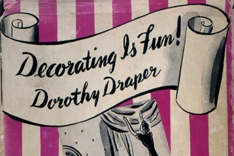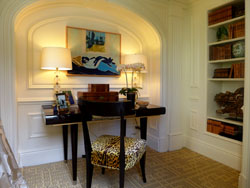Copper: Why the Green?
 Nova Bronstein
Nova Bronstein  Thursday, April 19, 2012 at 9:00AM
Thursday, April 19, 2012 at 9:00AM  Fernanda Sibilia "Confite" Patina CuffCopper can be gorgeous in its rosy untarnished hue but often doesn't stay that way. Smudges, tarnish, oxidation and patina all change the look of copper if left untreated. Ever noticed how anything copper that is left outside turns a bluish-green color in some places? And also, with jewelry made of copper, sometimes it leaves a greenish mark on the skin?
Fernanda Sibilia "Confite" Patina CuffCopper can be gorgeous in its rosy untarnished hue but often doesn't stay that way. Smudges, tarnish, oxidation and patina all change the look of copper if left untreated. Ever noticed how anything copper that is left outside turns a bluish-green color in some places? And also, with jewelry made of copper, sometimes it leaves a greenish mark on the skin?
 Fernanda Sibilia "Ceibo Hiluan" Mixed Metal EarringsSo why the green? The reaction is between the natural acids, salt and moisture from skin + sweat combining with the copper. Think about the patina (a surface reaction) that appears on copper roofs turning them this same frosty color. This comes from the cupric acid naturally found in the metal which comes to the surface through oxidation (reacting with oxygen) and is triggered by moisture + salt. This is the same reaction that happens on the skin due to natural perspiration.
Fernanda Sibilia "Ceibo Hiluan" Mixed Metal EarringsSo why the green? The reaction is between the natural acids, salt and moisture from skin + sweat combining with the copper. Think about the patina (a surface reaction) that appears on copper roofs turning them this same frosty color. This comes from the cupric acid naturally found in the metal which comes to the surface through oxidation (reacting with oxygen) and is triggered by moisture + salt. This is the same reaction that happens on the skin due to natural perspiration.
FYI: The reaction of one individual to copper on their skin varies from person to person depending on the pH of the individual's skin.
 Blonde Chick Ginko Leaf Patina Copper EarringsSo, here's the deal in terms of using copper for jewelry. Unless the copper metal has a coating of some kind on the outside, it will likely cause a green reaction to some people's skin.
Blonde Chick Ginko Leaf Patina Copper EarringsSo, here's the deal in terms of using copper for jewelry. Unless the copper metal has a coating of some kind on the outside, it will likely cause a green reaction to some people's skin.
To avoid this, you can use copper wire with a coating already on it -- which is what non-tarnish wire has, or you can seal the surface yourself with a spray enamel, spray varnish, soft polishing wax (like bowlers wax) or clear nail polish. The same goes for sheet metal. Any of these options will get the job done as they create a buffer layer between the metal and skin, preventing the green reaction.
 Fernanda Sibilia "Porota" Rose Gold CuffThis same approach can be used on copper whether you want to allow a patina, keeping the green-blue finish or you want your copper forever in a state of rosy shininess. Get your work to have the desired look first, then apply your chosen seal!
Fernanda Sibilia "Porota" Rose Gold CuffThis same approach can be used on copper whether you want to allow a patina, keeping the green-blue finish or you want your copper forever in a state of rosy shininess. Get your work to have the desired look first, then apply your chosen seal!
And, yet another option, like the lovely cuff on the right by Fernanda Sibilia, is to get your pieces plated with another metal that does not cause a reaction. The one here uses rose gold giving a similar effect of copper.
Below are some other fabulous examples of pieces that utilize both the look of the clean metal and the oceanic patina.
 Fernanda Sibilia "Boomerang" Choker
Fernanda Sibilia "Boomerang" Choker
 Fernanda Sibilia "Rita" Patina Cuff
Fernanda Sibilia "Rita" Patina Cuff
Interested in making some of your own smashing jewelry? As a jewelry design instructor at the Sheffield School in New York, I encourage you to take the matter of making into your own hands! Check out the newly launched Jewelry Design Course offered at the Sheffield School. With thousands of active students and more than 50,000 graduates, Sheffield has trained more design professionals than any other school in the world.
- Request a free Sheffield School catalog describing our distance education courses.
- Subscribe to the Sheffield Designer newsletter.



Reader Comments (21)
jam tangan replika
http://www.indojam.com